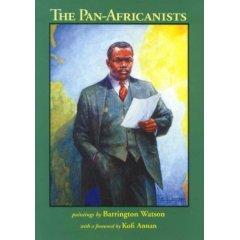| 2020ok Directory of FREE Online Books and FREE eBooks |
Free eBooks > Biographies & Memoirs > General > The Pan-Africanists
The Pan-Africanistsby Dudley Thompson  Download Book (Respecting the intellectual property of others is utmost important to us, we make every effort to make sure we only link to legitimate sites, such as those sites owned by authors and publishers. If you have any questions about these links, please contact us.) link 1 About Book Book Description This book celebrates the life of 17 Black leaders who have made outstanding contributions to the liberation, unity and solidarity of Africa and African peoples throughout the world. Inspired by the Pan-Africanists portfolio, a series of oil paintings by artist Barrington Watson, author Dudley Thompson presents the reader with succinct biographies each illustrated in full colour by a portrait in oil. Included among the biographies are Frederick Douglass, Harriet Tubman, W.E.B. Dubois, Marcus Garvey, George Padmore, C.L.R. James, Kwame Nkrumah, Julius Nyerere, Jomo Kenyatta, Haile Selassie, Paul Robeson, Rosa Parks, Martin Luther King Jnr., Muhammad Ali, Patrice Lumumba, Malcolm X and Nelson Mandela. This is both an art book and an important reference work for young readers throughout Africa and the Diaspora.. Barrington Watson is one of Jamaicas leading artists. He is the author of Shades of Grey, a collection of autobiographical stories illustrated with his own paintings. From the Back Cover This book celebrates the lives of seventeen Black leaders who have made outstanding contributions to the liberatin, unity and solidarity of Africa and African peoples throughtout the world. Inspried by the "Pan-Aricanists" portfolio, a series of oil paintings by artist Barrington Watson, the authors presesnt the reader with succinct biographies of Frederick Douglass, Harriet Tubman, W.E.B. Dubois, Marcus Garvey, George Padmore, C.L.R. James, Kwame Nkrumah, Julius Nyerere, Jomo Kenyata, Haile Selassie, Paul Robeson, rosa Parks, Maartin Lugher King, Jr., Muhammad Ali, patrice Lumumba, Malcolm X and Nelson Mandela. Not all of them necessarily belonged formally to a Pan-Africanist organization or ever used the term in descriptions of themselves. But the life of each one of them manifests the core values of Pan-Africanism. Together, their lives represent a pwerful emodidment of the history of this social movement. This is both an art book and an improtant reference work for young readers throughout Africa and the Diaspora.
Pan-Africanism is a people's movement, a struggle against the unjust and unlawful oppression of Black people. Such oppression is nothing new, for its origins lie in the enslavement and exploitaion of Black people dating from the first appearance of Europeans in Africa. From the beginning of the sixteenth century to the end of the nineteenth, slavery and the slave trade devastated vast areas of the continent. Some fifteen millions were shipped across the Atlantic to the plantations of the Americas, ranging from Brazil to the southern states of the US. This massive and violent transplantation of peoples damaged Africa's development, encouraging conflict and emptying parts of the continent of its youngest and fittest people. It also created large Black communities on the other side of the Atlantic, in almost every Caribbean island, in many South American countries and in the American South. Oppressed and exploited as slaves, these people survived the horrors of the plantation and kept alive important elements of their African culture through the generations. With the abolition of slavery in the nineteenth century came social reforms and the hope of a bette life, but racism and discrimination presisted. Migration spread the African disaspora more widely; Black people moved to Europe, to the northern states of the US and Canada. The development of Black communities around the world coincided with a new phase in Europe's penetration of Africa. Just 16 years before the first pan-African conference, the major European powers had gathered in Berlin to discuss the sharing out of colonies in Africa. In what was known as the 'scramble for Africa' the British, French, German and other governments carved up the continent, sending in troops, settlers and missionaries to almost every teritory that was not already occupied. The heyday of colonialism involved the wide-scale exploitation of African resources and African people. It also reinforced European ideas of white superiority and Black inferiority, ideas that had been used to justify the inhuman practice of slavery. The achievedments of Black people and African cultures were dismissed as 'primitive'. Many of the colonialists saw it as their duty to impose European beliefs and systems on the colonized peoples - whether they wanted them or not. From this experience of oppression and humiliation emergeda new generation of African leaders, mostly educated in European-run shcools but eager to rid their countries of the colonial mastes. Such leaders dreamed of seeing their nations free of outside rule and of restoring a sense of pride in their people's African identity. some also had an even greater dream - of seeing a divided and exploited Africa reunited. Related Free eBooks | Related Tags |












SEND A COMMENT
PLEASE READ: All comments must be approved before appearing in the thread; time and space constraints prevent all comments from appearing. We will only approve comments that are directly related to the article, use appropriate language and are not attacking the comments of others.